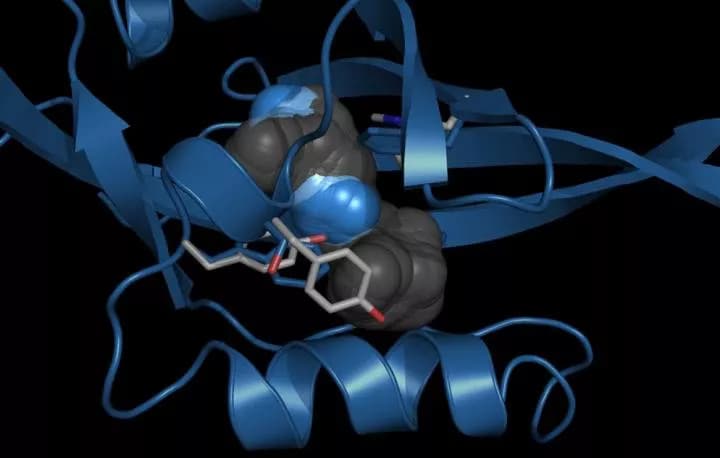
Kidney Cancer Treatment: Potential for New Classes of HIF Inhibitors
New insights into the potential for new classes of HIF inhibitors to restore control of the hypoxia response -- representing the potential foundation of a new cancer-fighting strategy -- are the focus of recently published articles in Nature and Structurefeaturing work by Kevin Gardner of the City University of New York's Advanced Science Research Center (CUNY ASRC).
Some of the outcomes of this research, which began during Gardner's time at the University of Texas Southwestern Medical Center, are currently in clinical trials as treatments for kidney cancer. A culmination of sixteen years of work, these new publications -- including researchers from the CUNY ASRC, UT Southwestern, and Peloton Therapeutics -- demonstrate that the compounds developed by Peloton are effective in more sophisticated models of kidney cancer.
"It's a dream of virtually everyone involved in biomedical research that a discovery you make yourself will make it out of the lab and into the clinic," Gardner said. "These papers represent a critical component of that jump, showing how a basic science discovery translates into the foundation for inhibiting kidney cancer in patient-derived tumor systems."
The article -- published in Nature on September 5 -- focuses on the hypoxia inducible factor (HIF) system, a pathway known for over 20 years to be involved in cellular adaptation to low oxygen (hypoxia) in normal cells and commandeered in types of kidney cancer. The HIF-2 system -- originally cloned in the mid-1990's by UT Southwestern researchers Steven McKnight and David Russell as a transcription factor which activated gene expression under low O2 conditions -- has typically been considered undruggable like other intracellular, non-enzymatic targets due to several technical challenges entailed in targeting and inhibiting such proteins within the cell.
However, Gardner's studies revealed the HIF-2a component of HIF-2 contained a large internal cavity that might be a good binding site for drug-like molecules. Along with his colleague Richard Bruick at UT Southwestern, Gardner took advantage of this feature by using high-throughput screening to discover such compounds and demonstrating their efficacy through in vitro biophysical and biochemical experiments.
The research was later licensed to Peloton Therapeutics, a biotech startup, which has advanced the academic work conducted by the UT Southwestern team to new classes of compounds that are currently in clinical trials as treatments for kidney cancer.
While aspects of this work have moved into clinical translation, there remain fundamental questions on how HIF-2 works. In tandem with the Nature article, Gardner's continuing academic research on the HIF-2a component of HIF-2 is the focus of an upcoming article in Structure, also featuring Dr. Fernando Corrêa, co-first author for the article and former Senior Research Associate at the CUNY ASRC's Structural Biology Initiative.
A key aspect of this is that the HIF-2a drug-binding cavity breaks many of the traditional rules that govern how proteins typically fold and function. Understanding how the cavity remains open in the absence of compounds, and how it responds to artificial and natural ligands, gives new insights on how proteins in general react to changes in their environment.
To this end, the Gardner group collaborated with experts in the protein design community to repack the interior of HIF-2a, reshaping the binding site and effectively filling in the cavity with protein groups in lieu of a drug. As reported in the upcomingStructure article (Corrêa, Key, et al., 2016), these surrounding proteins accommodate these modifications with a range of impacts on structure and dynamics.
"This work gives us insights into basic rules to protein folding for this type of ligand-binding cavity, giving us clues to engineer new classes of protein-based sensors that respond to cellular signals and control outputs of our choosing," Gardner said.
Materials provided by CUNY Advanced Science Research Center. Note: Content may be edited for style and length.
Disclaimer: DoveMed is not responsible for the adapted accuracy of news releases posted to DoveMed by contributing universities and institutions.
Primary Resource:
Chen, W., Hill, H., Christie, A., Kim, M. S., Holloman, E., Pavia-Jimenez, A., ... & Hao, G. (2016). Targeting Renal Cell Carcinoma with a HIF-2 antagonist. Nature.
Related Articles
Test Your Knowledge
Asked by users
Related Centers
Related Specialties
Related Physicians
Related Procedures
Related Resources
Join DoveHubs
and connect with fellow professionals

0 Comments
Please log in to post a comment.